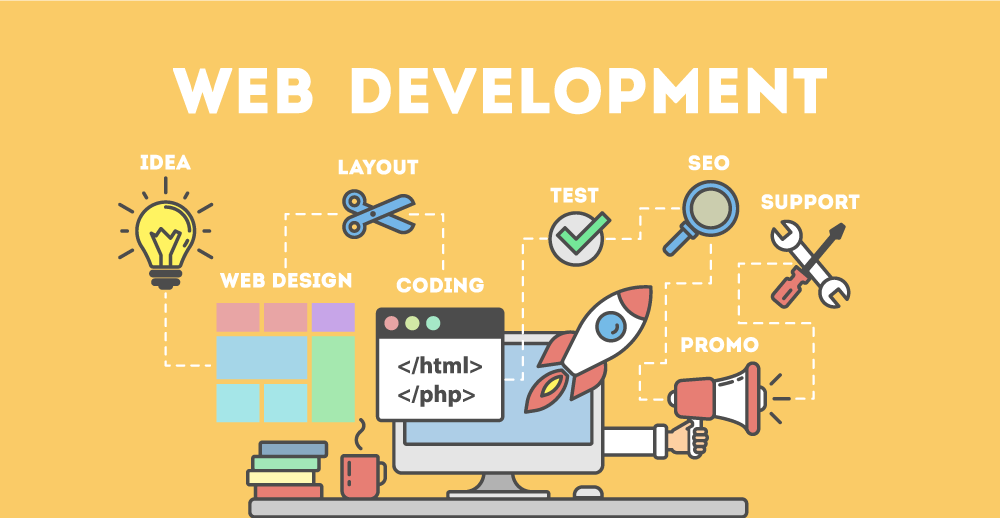The Do’s and Don’ts of Web Design
It doesn’t matter how long you’ve been in business, or how attuned you are to the target customer you are looking to attract – if you don’t have a well designed website in place, then you will always be losing out on valuable visitors, conversions, and profits.
This article dives into the Do’s and Don’ts of web design, both from a user perspective and from the perspective of the business partner we all love to hate – Google.
Web Design – Why it’s important
Your website design doesn’t just refer to the colours and aesthetic look of your website from a user point of view – it also refers to the usability of the different elements of your site: how well it aligns across different devices, how your chosen font and text size translates on the web page, how long it takes pages to load, and how long it takes for buttons to respond after they have been clicked.
In short, web design is everything that affects the user experience and that can boost or hinder the customer journey.
Web Design – The Do’s
- Consider Aesthetics
This is the images, the fonts, the colours, and the overall display of your website – what constitutes the most obvious part of web design. And yes, it’s crucial at portraying your brand’s tone, your message, your motivation, and the mood you are trying to create. For example, a heating website will choose aesthetics involving warm colours and tones, whereas a festive website will keep it light and Christmassy, and a skincare brand will keep it very clean and neutral.
- Implement Branding
This links with the first point on our list, with branding colours one of the easiest ways to create consistency across your aesthetics. Businesses and companies will often pass their branding guidelines over to web designers to aid in the creation of a website which portrays their key brand values – ensuring that the brand is front and centre of all creatives.
- Optimise your Website across Devices
This is crucial in the 21st century, with more browsers than ever discovering websites through social media that they access through their phones and doing regular research and scrolling on their mobile devices while out and about. Optimising your website for mobile and other devices essentially means that no matter what device is used to visit your site, the layout, text, and appearance of the site will be adjusted to fit the screen and ensure that none of the quality is lost.
This isn’t just a “Do” – it’s a “Must”.
- Create Regular, Valuable Content
One of the biggest recommendations we give to business owners building websites is to keep their content creation regular, valuable, and concise. People rarely read extensive blogs – but they will skim through and pick out the main points of an article or post that promises value.
This is also where well thought out headlines and titles come into play, with the headline of any piece of content you share either making or breaking its success rate.
- Test Regularly
This is the single best way of identifying any issues with your website before they start to impact usability and conversion, with thorough tests including the display of all pages and click-throughs.
Factor regular testing into your web design and ongoing maintenance plan.
- Remember SEO
Web design shouldn’t exclude copy and the way you use the words on your site to attract and entice Google and captive users alike. Do your keyword research and get to know the best processes for implementing those keywords enough to positively impact your SEO without overstuffing.
Web Design – The Don’ts
- Don’t go overboard on colours and images
You want your website to be inviting and engaging, without being confusing. Too much visual change and inconsistency can render a website distracting and will take the users attention away from the desired action you want them to take. Keep statements short, headings concise, and CTA buttons super clear. And on this same topic, give thought to the use of colour across any of your text – no matter how big it may be. Coloured text can be difficult to read and inaccessible to a multitude of people. Never put design in front of usability in terms of your priority focus.
- Don’t overload the page load wait time
If your website takes too long to load (too long here being more than 2 seconds), users will grow frustrated and will likely give up on their customer journey. This is also a key factor that can hinder your site’s viability with search engines like Google. Reduce file sizes, consider the importance of all those images and videos, and measure your site’s load time regularly to isolate problematic pages.
- Don’t show pop-ups too early
Pop-ups refer to the automatic boxes which appear while a user is on your website – but if they appear too quickly, the website is not only perceived as annoying but overly pushy. You want your user to see the pop-up after they understand a little more about what your brand and website is all about – not while they are still forming their initial thoughts.
- Don’t over-advertise
Once again, we return to the main goal of your website which is to guide the user towards the intended action. Anything else on the webpage simple serves as a distraction, so if the entire border of your page is filled with different adverts and banners, all you are doing is pulling focus away from the main body of content in the centre. There’s a reason why we call it “sensory overload” …
The Next Steps for Your Website
The best way to get started with a new website build or the renovation of an existing website is to build a site map, outlining all the different pages of your site and how they will make up the customer journey from start to finish. Understanding where customers go when they are on your website forms a big part of this, as it can help to create a journey with consistent and progressive messaging from one step to the next.
For advice and guidance on your web design journey, no matter how big or small your business is, we can help.

